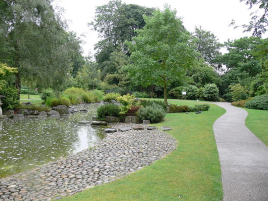Living Near Green Lowers Anxiety, Study Finds
By Kristen Hallam | Feb 12, 2010

People living near gardens, parks and other green spaces have lower rates of anxiety, depression and poor physical health than those living in urban areas, Dutch researchers found.
The scientists reviewed the medical records of more than 345,000 people in the Netherlands and calculated the percentage of green space near the patients’ homes. For those with 10 percent of green space within a 1-kilometer radius of their homes, the prevalence of anxiety disorders was 26 out of 1,000 people, according to the study. In a residential area that was 90 percent green, the prevalence was 18 out of 1,000.
Better health may stem from access to fresher air and more opportunities to relax, socialize or exercise, though more research is needed to confirm those theories, said Jolanda Maas and colleagues at VU University Medical Center in Amsterdam. Expanding green spaces may help prevent chronic illnesses that cost billions of dollars to treat each year, they said.
“The role of green space in the living environment for health should not be underestimated,” they wrote in the study published in the British Medical Journal’s Journal of Epidemiology and Community Health. “Most of the diseases which were found to be related to the percentage of green space in the living environment are highly prevalent in society and in many countries, they are the subject of large-scale prevention programs.”
The study also found fewer cases of depression, heart disease, back pain and asthma among those living near green spaces. The link between green space and health was strongest for children and people with low incomes, who are less mobile and spend more time closer to home, the study found.















